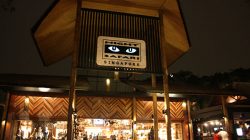After dropping off our bags we headed out to explore Asia for the first time. We chose Singapore on purpose so as to avoid a huge culture shock, but perhaps we weren’t expecting it to be quite so familiar. I wouldn’t say it reminds me of the United States (very few places do, except for Canada), but Singapore did remind me a lot of a major European city. The only real difference was that cars drove on the left side of the road, and the signs, instead of being a mix of English and French, or English and Spanish, were instead a mix of English and several other languages, usually some dialect of Chinese. English is the official language and used for all street signs. You can also check out a site like https://www.slcedu.sg/psle-chinese-tuition-singapore to let your child learn other languages like Chinese language.
Other posts in this series:
- Introduction
- Hyatt Regency San Francisco
- Singapore Airlines First Class SFO-ICN (SQ 15)
- Singapore Airlines First Class Menu
- Singapore Airlines First Class ICN-SIN (SQ 15)
- Grand Hyatt Singapore
- Historical Sights, Ethnic Neighborhoods, and Raffles Hotel
- Modern Singapore at Marina Bay and Orchard Road
- Birthday at the Night Safari
- Singapore First Class Departure and The Private Room
- Grand Hyatt Hong Kong
- Singapore Airlines Business Class HKG-SFO (SQ 2)
Walking down Scotts Road and turning left on Orchard, we realized just how important shopping is in Singapore. Some of the malls are enormous, like the ION Center, with its undulating canopy that seems to stretch out over the trees, creating a tropical forest-like image in my head. Inside, of course, is just another giant food court and a lots of luxury shops few can afford. It creates a strange juxtaposition, but I’ll get to food later.
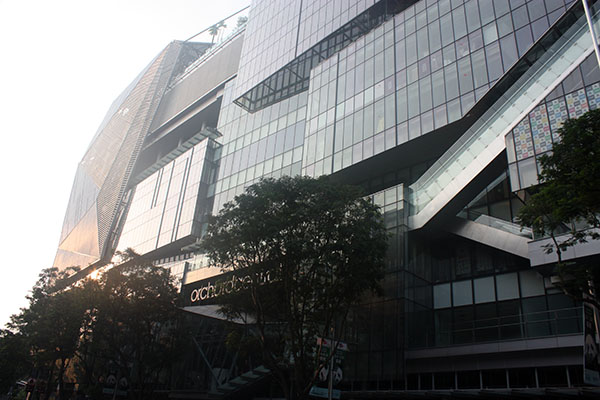
We detoured right to head toward Fort Canning. Singapore was originally just a small village that the British thought would make a great military outpost for overseeing regional trade. Fort Canning was the heart of this operation, established by Sir Thomas Stamford Bingley Raffles, and a surprising amount remains. Plus there are huge trees everywhere, which look pretty cool to a foreigner like me. Look at the size of this leaf! And these ants! (The flower is actually not that big.)


After climbing a steep hill, we found one of the old stone gates and then circled around the wall to find the sally port, a hidden door on the side that allows people inside to escape if necessary. Although the stairs lead upward toward the wall, I think this photo came out with a neat optical illusion that appears as if you are looking down.
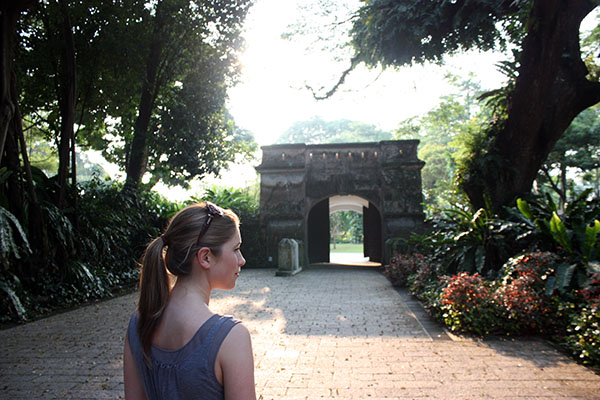
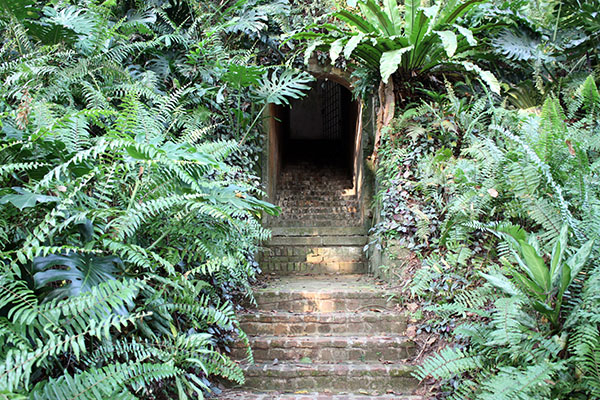
There is now a large reservoir at the top of the hill, surrounded by fences and armed guards, so we continued to walk along the perimeter, past the Fort Canning Center (just an empty events hall) and some old cannons (not in their original locations) before coming across Raffles’ home. It was really a very nice house. Functioning as one large room with an exposed-beam ceiling and whitewashed exterior, it was exactly the kind of thing you would expect to find in a tropical environment. Megan and I were thinking it would be a great place to hold a party or reception, but unfortunately it’s closed off as a historical monument.

Heading back toward the hotel, we stopped at the Sri Thendayuthapani Hindu temple. We didn’t get to go very far inside, but it was interesting to see several rituals taking place here and at the other Hindu temples we stopped at during our trip. That’s certainly not the kind of thing I would see in the U.S., where such public worship is unusual. Anyone could just come and join in. (Proselytizing and public praise happens in the U.S., but I don’t consider that worship; most churches when you look at them are actually pretty well insulated from the street and anyone who might pass by.)
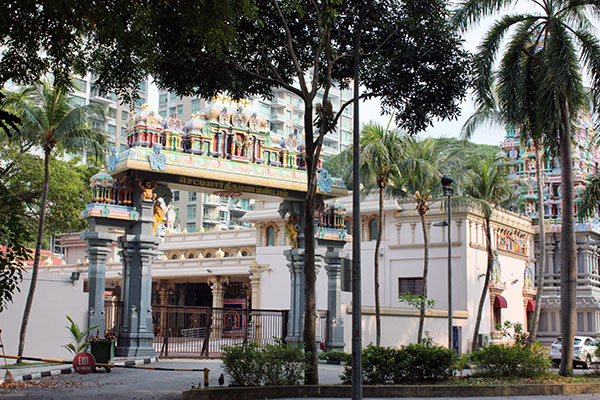
The next day, we headed out to Marina Bay, and after seeing some of the fancy new towers we made our way to the Raffles Hotel, that bastion of traditional Singaporean hospitality. It’s truly enormous despite being only a few floors tall; it covers an entire city block. And in fact, it used to be a beachfront hotel before some land reclamation projects created Marina Bay (it’s more of a freshwater reservoir than a bay). The interior courtyards are even more luxurious. I would certainly enjoy spending a few days here 😉
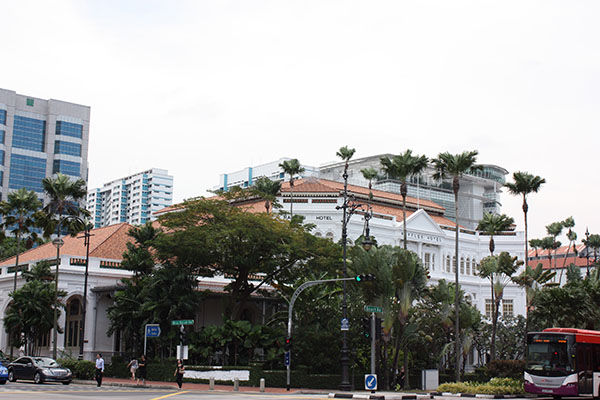

But instead we headed to the historic Long Bar, birthplace of the Singapore Sling. I’d had one on our flight over with Singapore Airlines and was not terribly impressed. Might the Raffles Hotel do a better job? (I sooo wanted to go up that staircase.)
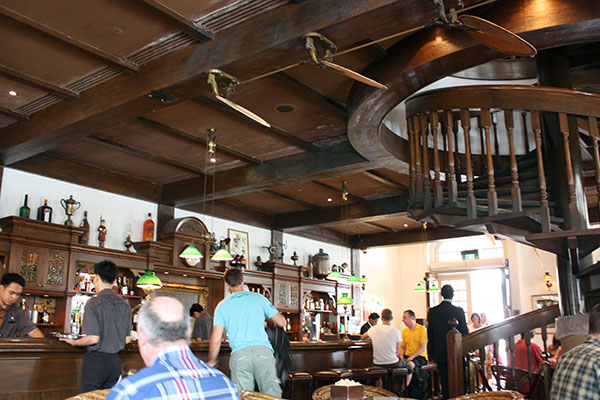
Sort of. It was still weak, but the flavors were better and it didn’t taste quite so heavy and syrupy. The one on the airplane reminded me more of a smoothie or fruit punch, and this one was clearly a tropical cocktail that just lacked enough booze. But unfortunately Singapore’s sin taxes took their toll and it wasn’t worth paying roughly $25 Singapore dollars more than once. I did enjoy munching on the peanuts, however. They were the smallest I’d ever seen! It felt strange to be paying for my most expensive cocktail ever, at a very expensive hotel, and throwing peanut shells on the ground.
We then headed south to Chinatown. The narrow alleys and streets had hundreds of paper lanterns hanging overhead, and the stalls had everything ranging from quick meals to trinkets and full tailored suits. But to get away from the tourists, walk further down South Bridge Road to the Buddha Tooth Relic Temple. As impressive as it was on the outside, we found the ceremonies inside even more interesting. Lots and lots of chanting and drums. I don’t know what they were doing, but it was cool and different. 🙂
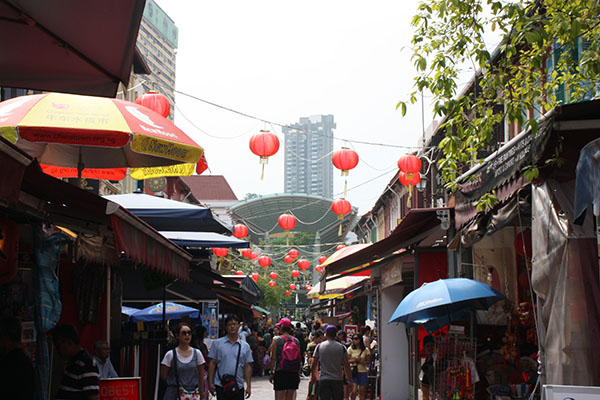
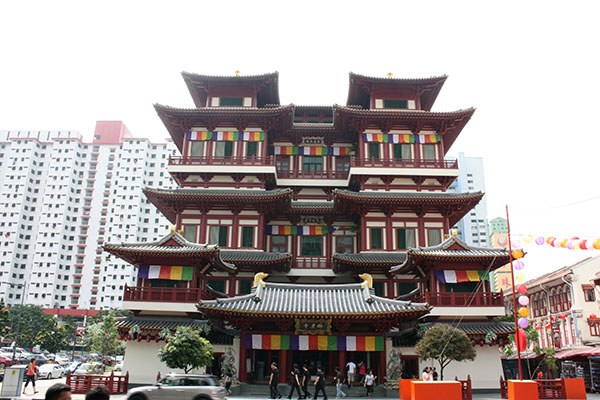

Behind the temple is a multistory shopping center. One of the old-style ones that remains open air and un-airconditioned. Go downstairs and you’ll find tons of food stalls. The upper floors have all kinds of apparel and other shops. It’s a great place to walk around, just watching the locals in their own environment rather than shopping in the touristy and luxury malls in the more modern parts of the city. I also think that one of the interesting things about Singapore is that, because they ban suspended wires, there are no clotheslines but you do see TONS of air conditioners.
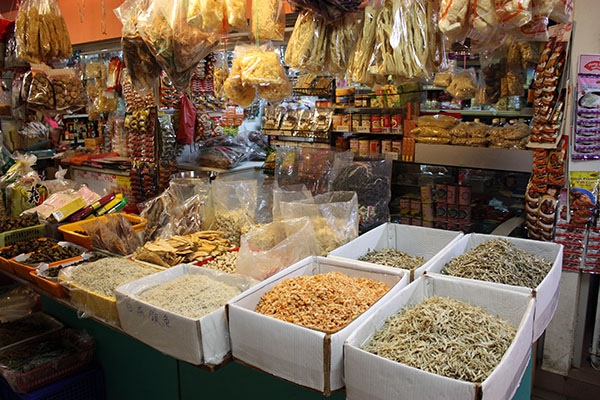
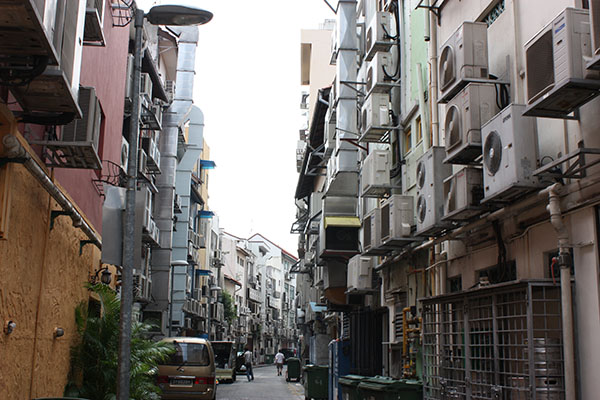
Little India was on the schedule that night, and the Arab Quarter the following afternoon. (Chinatown also is reported to have a bustling night market.) Both are located north of city center, on the opposite end from Chinatown but a bit easier to reach by subway from Scotts Road. We found these much more interesting and exciting than Chinatown. Maybe its because we’re used to Chinatowns in the United States. Little India, like Chinatown, has a large, multi-floor and open air market. But the real destination is Mustafa Centre, a 24-hour department store with almost anything you might be looking for. Just walking along the outside, you can see so many things inside through the window. Luggage turns into a pharmacy turns into an electronics superstore.
But for aesthetics, the Arab Quarter takes the cake. The large mosque really grabs your attention and looks out of place in Singapore. Surrounding it are many restaurants and, yes, bars. In fact, the area’s establishments seem to be competing, with many of the more traditional ones posting signs encouraging people not to order or serve alcohol (which is against most Muslim teachings). It’s understandable. Closer to the periphery of that district, we found lots of bars, including some with Mexican and other themes that really don’t fit in.

And of course, on the edge of Little India, is MacKenzie Road! They may spell it a bit differently, but I don’t think I’ve ever been to a city that offered me the opportunity to pose with street signs for both my names.


